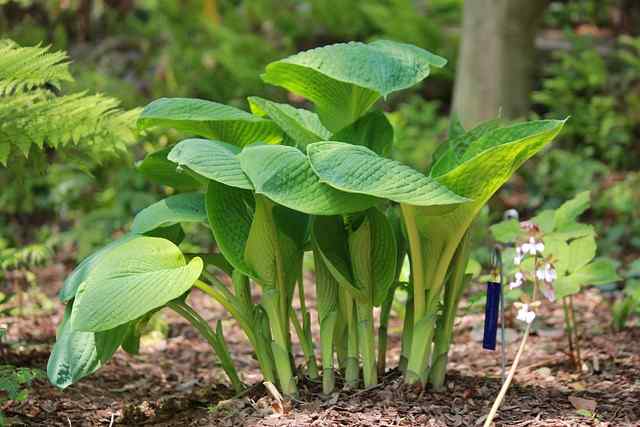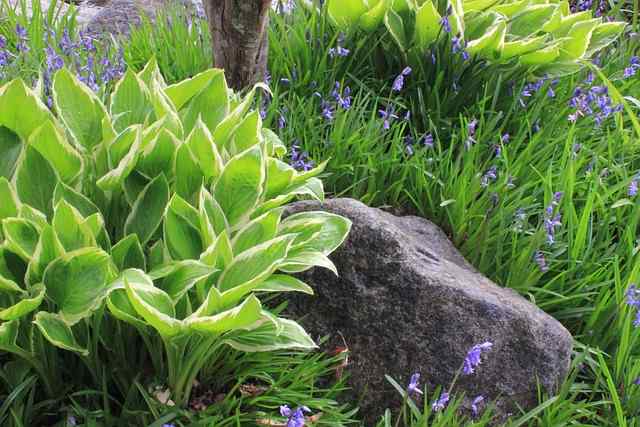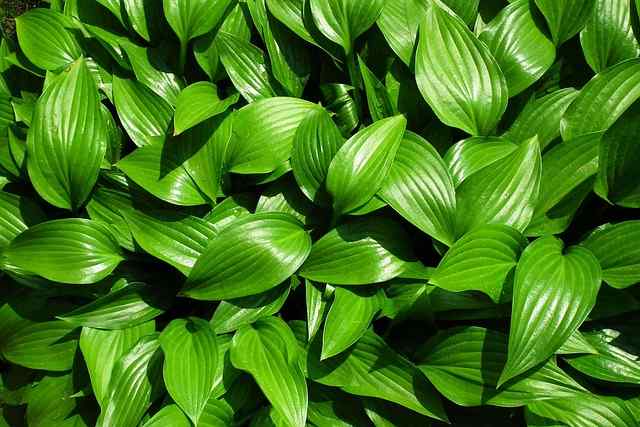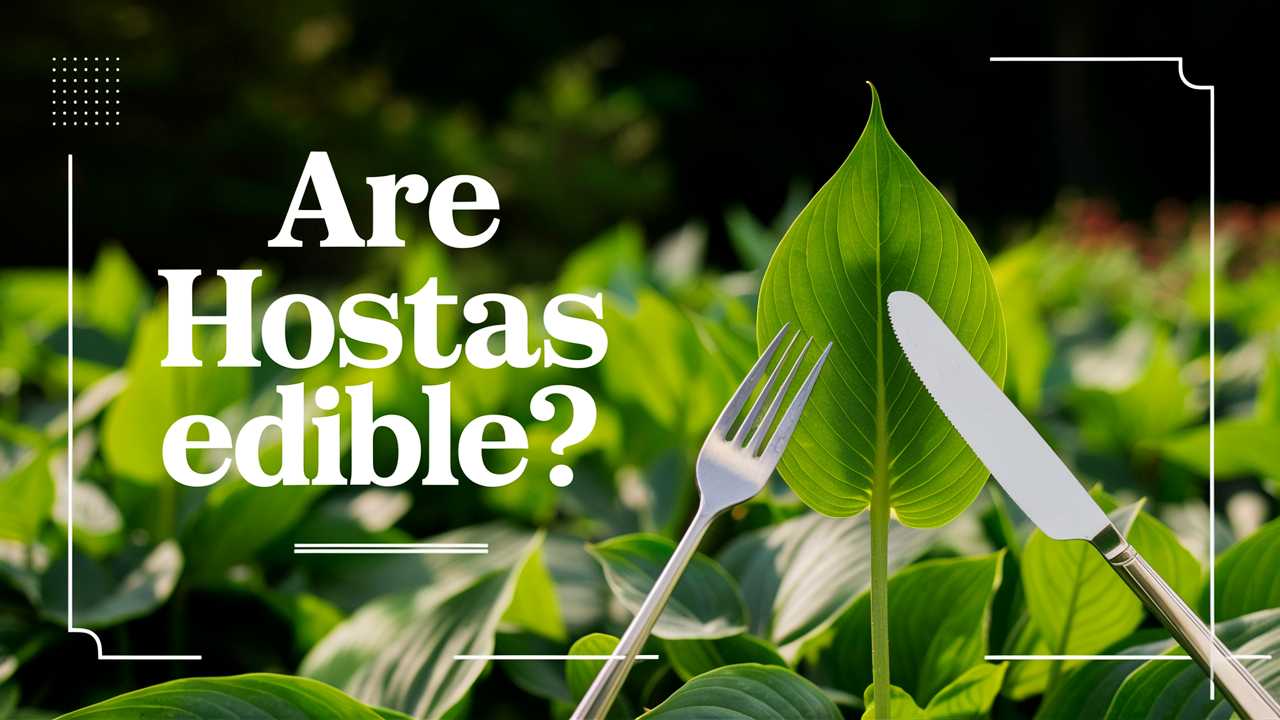In this comprehensive guide, we will explore the edibility of hostas, their nutritional value, culinary uses, and safety considerations. Join us as we delve into the world of hostas beyond their ornamental appeal.
Are Hostas Truly Edible?

Yes, hostas are indeed edible! This lesser-known fact may surprise many, but various parts of the hosta plant can be consumed safely. The young leaves, shoots, and flower buds of hostas can all be eaten, often when they are tender and fresh. In fact, in some cultures, particularly in Asia, hostas have been used as a traditional food source.
Young Leaves and Shoots
The most commonly consumed parts of hostas are the young leaves and shoots, which are generally harvested in the spring before the leaves fully unfurl. At this stage, the leaves are tender and have a mild flavor reminiscent of lettuce or cucumber. They can be enjoyed raw in salads, providing a unique texture and taste, or cooked in various dishes, much like spinach or other leafy greens.
Flower Buds
While the leaves are often the star of the show, the flower buds of the hosta plant are also edible. They can be picked before blooming and used in the same way as the young leaves. When cooked, they develop a slightly sweeter taste, adding an interesting dimension to your dishes.
Nutritional Benefits of Hostas

Exploring the nutritional profile of hostas adds another layer to their allure as an edible plant. While comprehensive nutritional data is often scarce, hostas are generally low in calories and high in water content, similar to many leafy greens. Some potential nutritional benefits include:
Vitamins and Minerals
Hostas are believed to contain varying levels of vitamins A and C, both of which are vital for maintaining a healthy immune system and promoting skin health. The presence of minerals such as potassium and magnesium can also contribute to overall well-being, aiding in muscle function and heart health.
Low-Calorie Option
For those seeking to incorporate more greens into their diet, hostas present a low-calorie alternative. Their light flavor and texture make them a suitable addition to salads, soups, and stir-fries without adding significant calories. This can be especially appealing for people looking to manage their weight or simply enhance their vegetable intake.
Culinary Uses for Hostas

With the establishment that hostas are indeed edible, let’s explore the various culinary uses for this versatile plant. Their unique flavor and texture lend themselves to a variety of dishes, from appetizers to main courses.
Salads and Wraps
One of the simplest ways to incorporate hostas into your diet is by using the young leaves in salads or wraps. The tender leaves, sliced into ribbons, can add crunch and mild flavor to mixed greens and other vegetables. Pair them with a tangy vinaigrette or creamy dressing to enhance their subtle taste.
Soups and Stews
Hostas can be a delightful addition to soups and stews, particularly when cooked alongside other vegetables. When simmered, the young shoots can absorb flavors from broth and spices, delivering a lovely, earthy flavor. Experiment with incorporating them into vegetable soups or Asian-inspired broths, where their texture and taste can shine through.
Stir-Fries
The shoots and flower buds can also be tossed into stir-fries, bringing a unique texture to the dish. Stir-frying them briefly allows the softer parts to retain some crunch while soaking up the flavors of sauces and spices. Add hostas to your favorite stir-fry recipes alongside other vegetables, tofu, or protein to create an appealing and nutritious meal.
Pickling
A fun and creative way to preserve the bounty of your hosta plants is through pickling. If you have an abundance of flower buds, consider pickling them in a vinegar brine with spices for a unique tangy side dish. These pickled buds can be enjoyed on their own or added to sandwiches and charcuterie boards.
Safety Considerations: What to Know Before Eating Hostas

While hostas are edible, it’s crucial to ensure that you are consuming them safely. Here are some essential safety considerations to keep in mind:
Avoiding Chemicals
Like many plants in our gardens, hostas can be treated with pesticides, herbicides, or other chemicals. Always ensure that any hostas you intend to consume are grown organically, free from harmful chemicals. If you’re foraging for hostas, be aware of potential contamination from pollutants or chemical treatments in the area.
Allergies and Sensitivities
Before incorporating hostas into your diet, it’s wise to consider any potential allergies or sensitivities. Even though hostas are generally safe to eat, some individuals may experience allergic reactions. It’s recommended to start with a small amount to see how your body reacts before making them a regular part of your meals.
Consult Local Experts
If you’re uncertain about the edibility of a specific hosta variety, it may be beneficial to consult local experts or foraging groups. Not every hosta cultivar may possess the same culinary qualities, and knowledgeable individuals can help guide you toward the best options.
Growing and Harvesting Hostas for Culinary Use
If you’re inspired to incorporate hostas into your culinary repertoire, growing your own offers the most control over the quality and safety of the plants. Here’s how to get started:
Choosing the Right Variety
While nearly all hostas are edible, certain varieties are known for their superior culinary qualities. Consider starting with hostas such as ‘Hallelujah’ or ‘Gold Standard,’ as these cultivars are not only visually appealing but also deliciously tender when harvested at the right time.
Planting and Care
Hostas thrive in well-drained soil and prefer partial to full shade. When planting, ensure they have enough space to grow and flourish. Regularly water them during dry spells, and consider adding organic mulch to retain moisture and suppress weeds.
Timing for Harvesting
To achieve the best flavor and texture, harvest hosta leaves and shoots in early spring as they begin to unfurl. This is the period when they are most tender. If you’re gathering flower buds, aim to do so just before they open, when they are still tightly closed to ensure maximum flavor.
Conclusion: Expanding Your Culinary Horizons
In conclusion, hostas present an intriguing opportunity for those looking to expand their culinary horizons beyond traditional garden vegetables. Their edibility, coupled with the nutritional benefits and potential uses in various dishes, make them a delightful addition to any garden and kitchen.





